Idea by
Erica Chladová & Robert van der Pol
LMNL
Call for ideas 2017
Climate Changes Us
Climate Changes Us
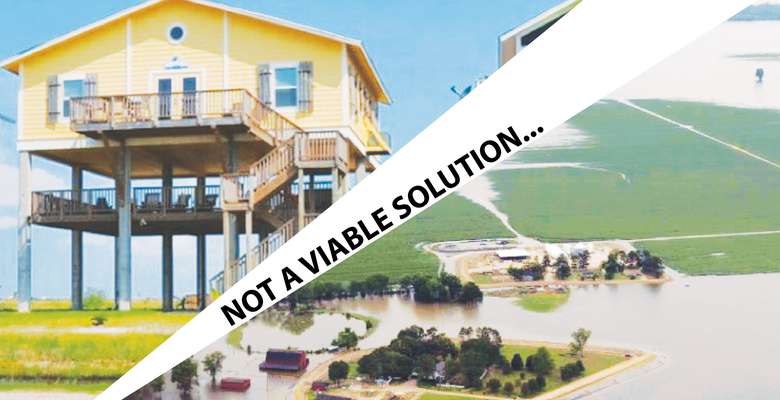
After the destruction of cities during WWII, inspired architects and the Modernist movement helped to shape every aspect of 20th century life. Architects recently have been focused on building cities upwards and outwards, but have lost their role in the larger urban realm.
Meanwhile, rising sea levels and flood events driven by climate change threaten millions upon millions of households and commercial properties. The increasing frequency of these events and the massive economic impact they precipitate are one of the greatest spatial challenges of our time.
The future of many cities will rely on Future Architecture’s response to climate change and our relationship to the waterfront. From heavily industrialized, to newly redeveloped, it will soon need to be heavily fortified. The question is what form design will give these defense structures, what opportunities for investment and development can be created by their spatial impact, and in what manner we can get them built.
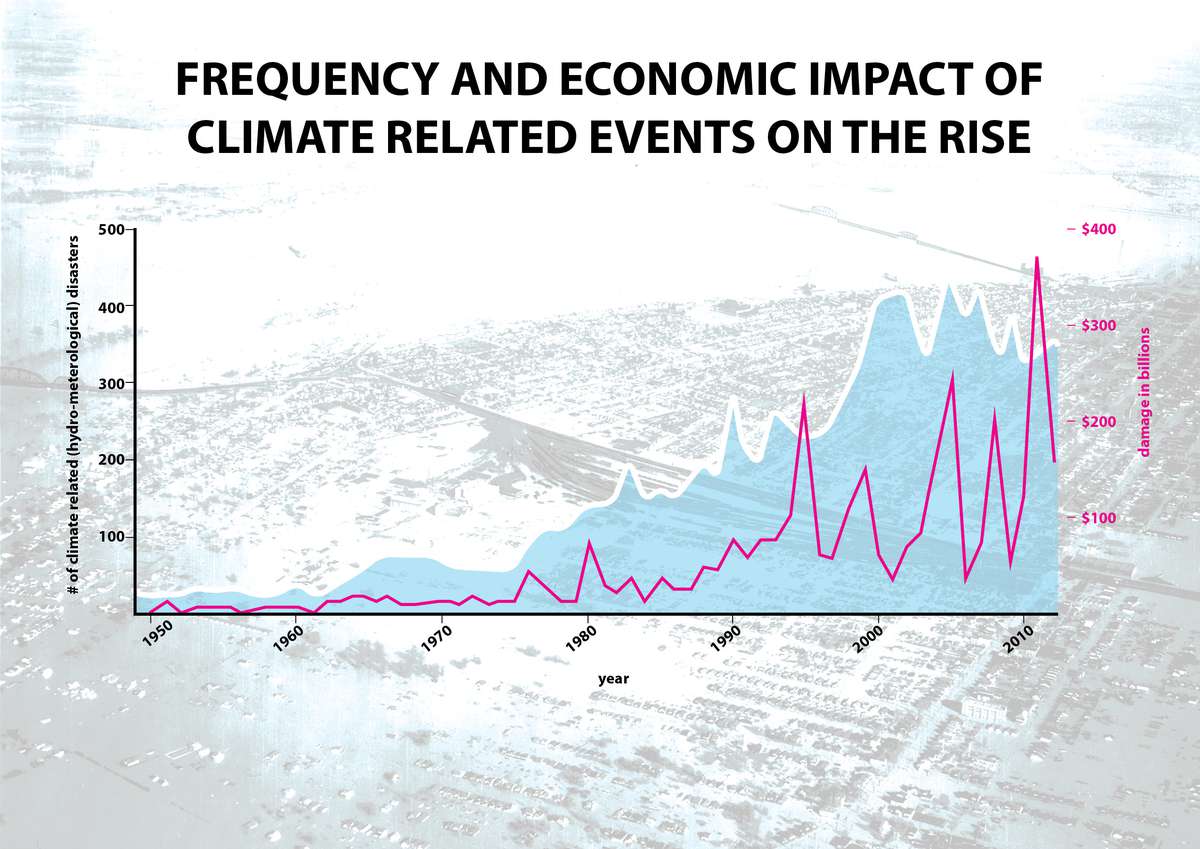
The frequency and economic impact of climate related events is on the rise. A four-fold increase in 50 years, and there is no doubt that our cities are under threat from increased flooding and storm surges which cost billions of dollars each year to remediate. Rather than spending money cleaning up each time, lets invest in protecting ourselves.

Much of the USA coastline from Maine to Texas is under severe flood risk, as are major cities along European rivers, nevermind deltas all around the world. Only large scale interventions that take into account entire watersheds across several states or even countries can mitigate the rising water levels. How can architects help individuals, cities, and countries to deal with this increasing threat?
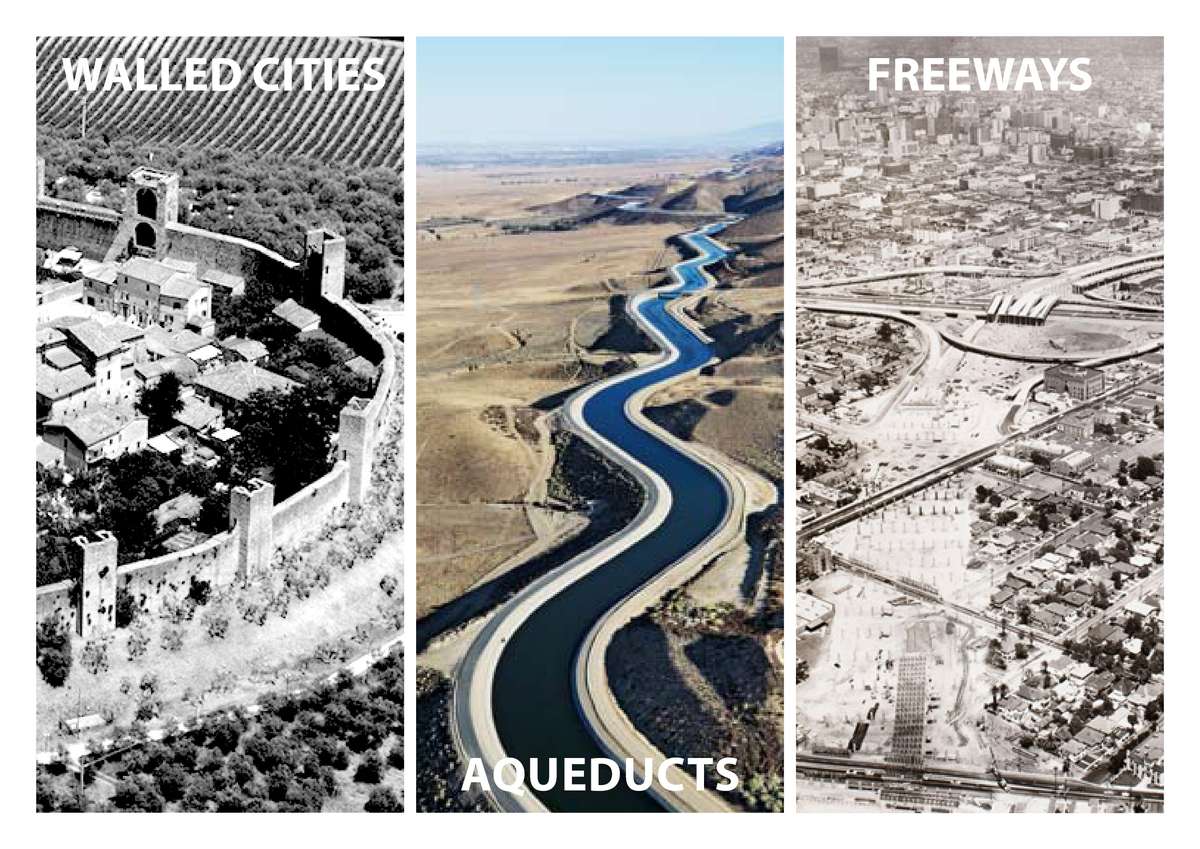
Don't worry, we have solved our large scale problems before. Walled cities kept invaders out, aqueducts brought water from hundreds of kilometers away, and freeways were built right through the urban fabric when we wanted to drive our cars everywhere! But lets not let the engineers have all the fun this time : architects it's time to take control of these projects.
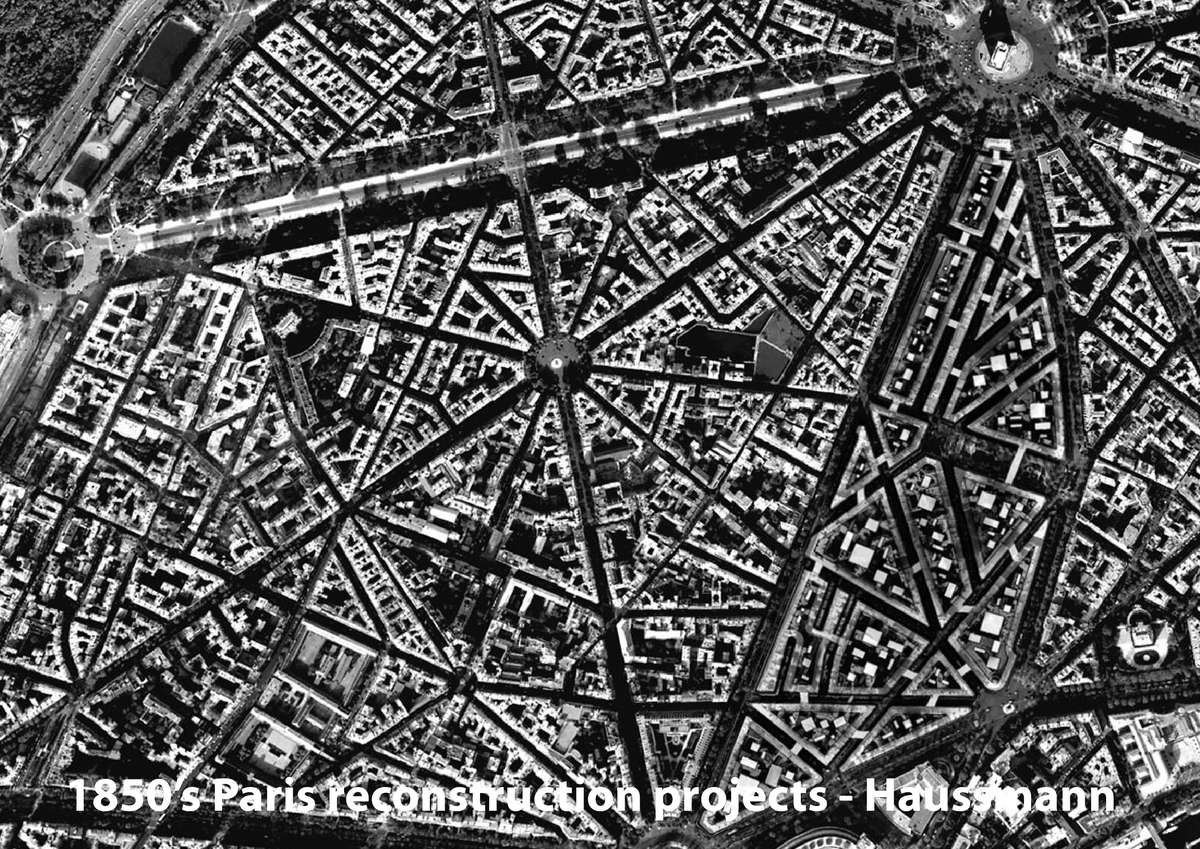
Interventions in the name of protection from rising water levels are an opportunity to revisit the design of our urban fabric and begin to mitigate the impacts of relentless urban sprawl while setting up new city edges within which we can begin to densify our existing settlements. Take Haussmann's Paris renovation as an example.
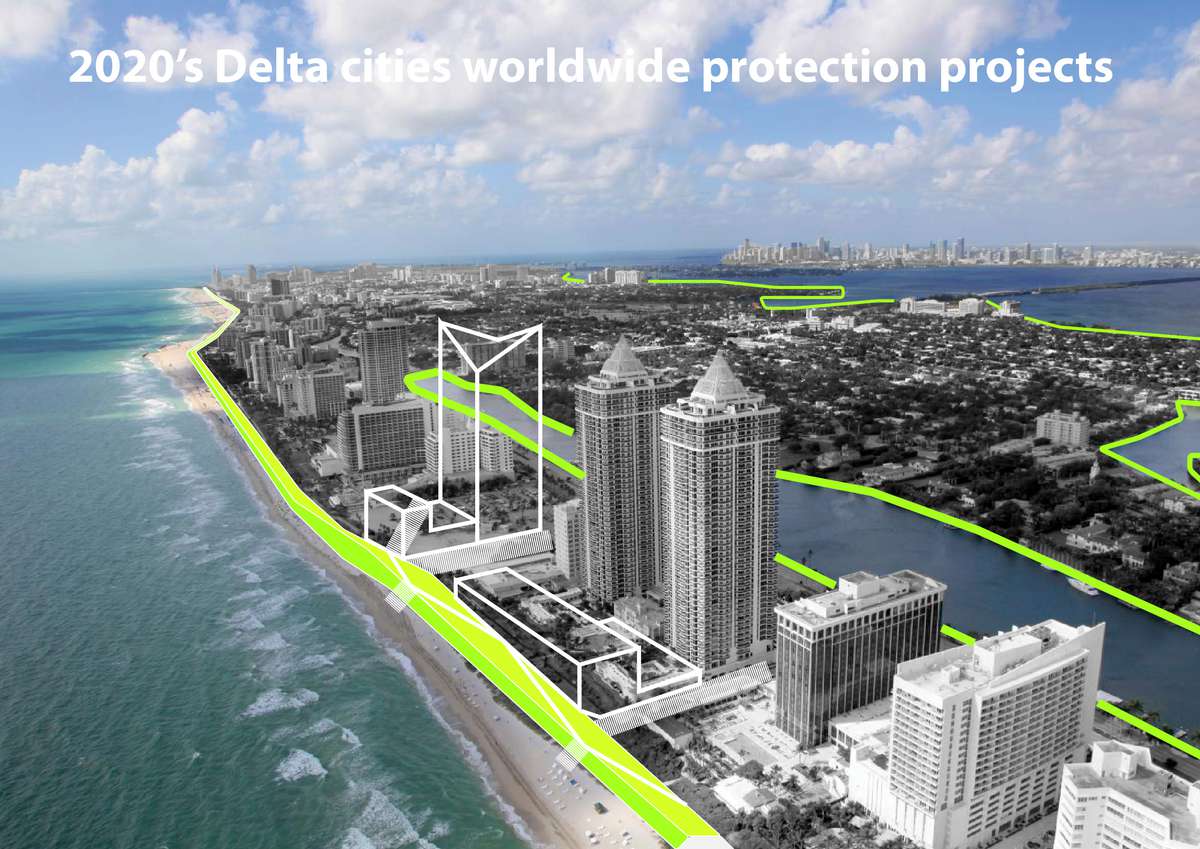
All waterfront cities will have a very different shorelines by 2050, because if they don't then their low lying areas will cease to exist. Architects will soon be designing and testing out various flood defense structures, solving accessibility issues and pinpointing development opportunities for these new spatial interventions 10+ feet in the air.
Climate Changes Us
Climate Changes Us

After the destruction of cities during WWII, inspired architects and the Modernist movement helped to shape every aspect of 20th century life. Architects recently have been focused on building cities upwards and outwards, but have lost their role in the larger urban realm.
Meanwhile, rising sea levels and flood events driven by climate change threaten millions upon millions of households and commercial properties. The increasing frequency of these events and the massive economic impact they precipitate are one of the greatest spatial challenges of our time.
The future of many cities will rely on Future Architecture’s response to climate change and our relationship to the waterfront. From heavily industrialized, to newly redeveloped, it will soon need to be heavily fortified. The question is what form design will give these defense structures, what opportunities for investment and development can be created by their spatial impact, and in what manner we can get them built.
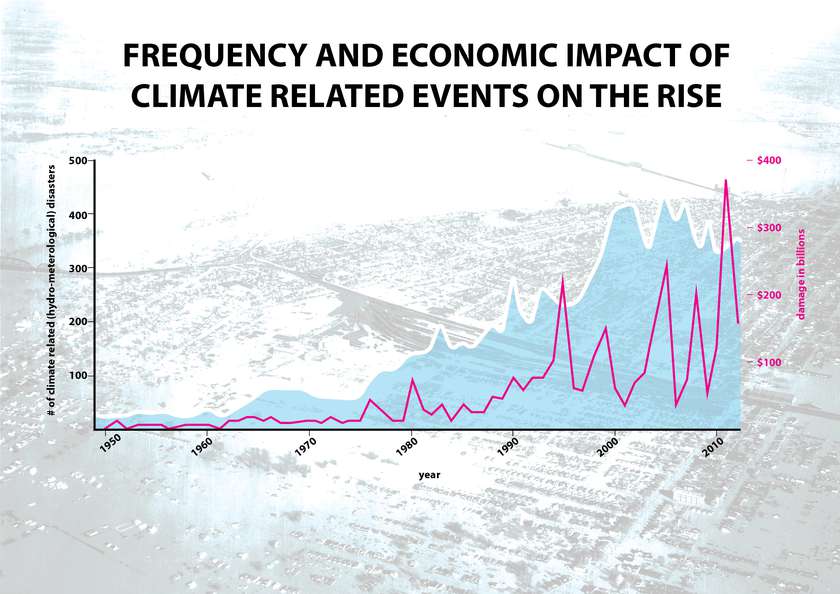
The frequency and economic impact of climate related events is on the rise. A four-fold increase in 50 years, and there is no doubt that our cities are under threat from increased flooding and storm surges which cost billions of dollars each year to remediate. Rather than spending money cleaning up each time, lets invest in protecting ourselves.
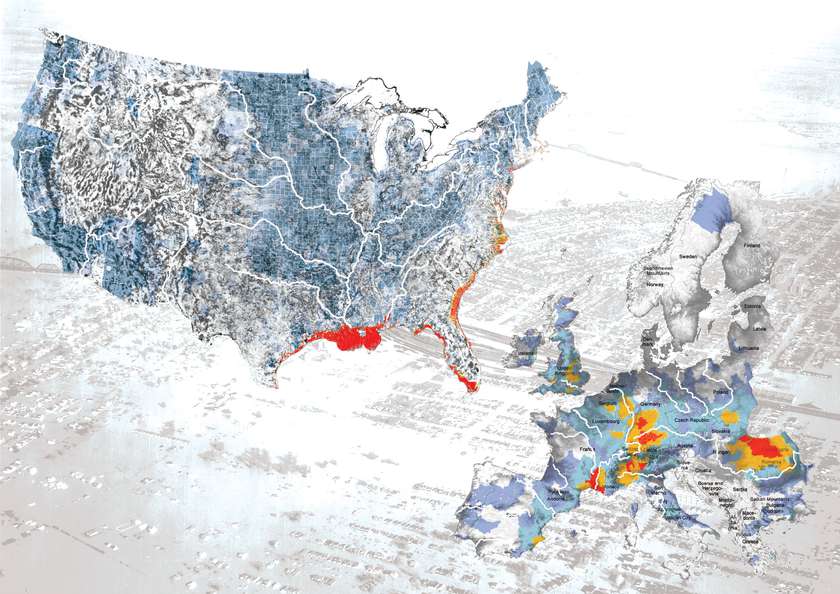
Much of the USA coastline from Maine to Texas is under severe flood risk, as are major cities along European rivers, nevermind deltas all around the world. Only large scale interventions that take into account entire watersheds across several states or even countries can mitigate the rising water levels. How can architects help individuals, cities, and countries to deal with this increasing threat?
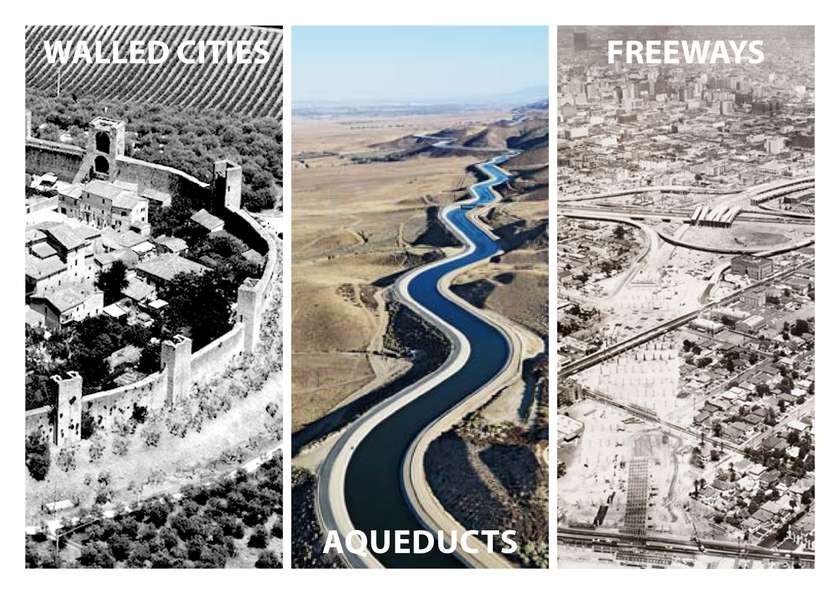
Don't worry, we have solved our large scale problems before. Walled cities kept invaders out, aqueducts brought water from hundreds of kilometers away, and freeways were built right through the urban fabric when we wanted to drive our cars everywhere! But lets not let the engineers have all the fun this time : architects it's time to take control of these projects.
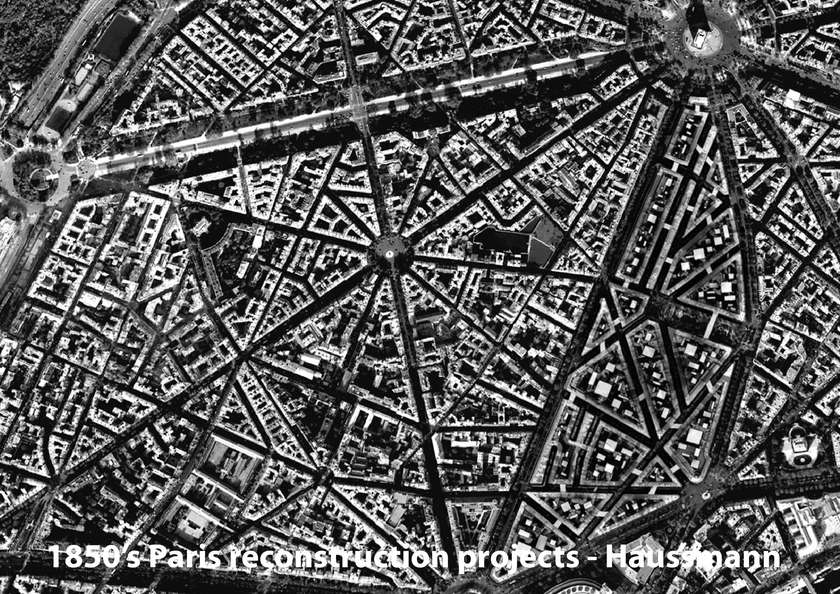
Interventions in the name of protection from rising water levels are an opportunity to revisit the design of our urban fabric and begin to mitigate the impacts of relentless urban sprawl while setting up new city edges within which we can begin to densify our existing settlements. Take Haussmann's Paris renovation as an example.
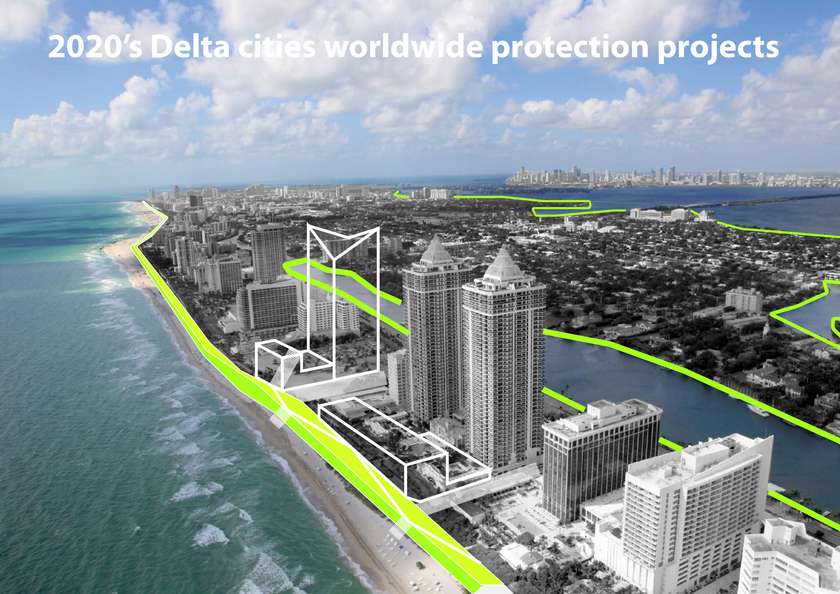
All waterfront cities will have a very different shorelines by 2050, because if they don't then their low lying areas will cease to exist. Architects will soon be designing and testing out various flood defense structures, solving accessibility issues and pinpointing development opportunities for these new spatial interventions 10+ feet in the air.